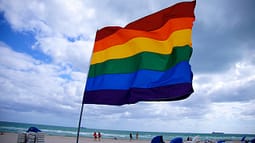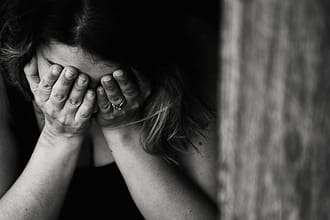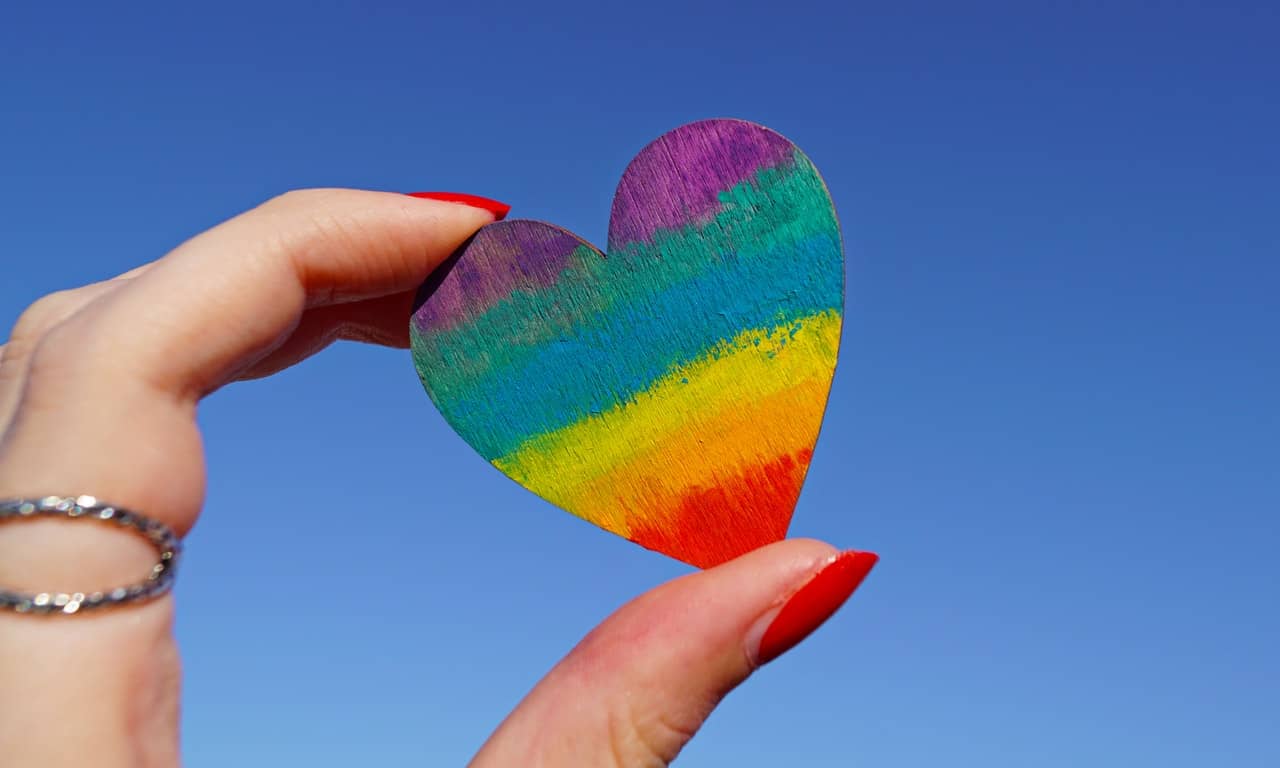[dropcap]I[/dropcap]n the hit movie “Frozen” from 2013, Elsa, the queen of Arendelle, is forced to hide her magical ability to create ice and snow. When her powers are discovered by the citizens of the kingdom, they view her as a monster and force her to run away. Without her there, the kingdom starts to crumble, so Anna, Elsa’s sister, leaves Arendelle to retrieve Elsa. In the end, the kingdom goes back to being sunny and successful because they allow Elsa to come home and they accept her and her abilities.

Image by Ted Eytan via Flickr
Just like Elsa, the LGBT community is often persecuted for being ‘abnormal’. They are often seen as sinful or strange, and in extreme cases, they are sent to conversion therapy. Conversion therapy is an awful thing that causes unimaginable amounts of psychological trauma in its patients. It is also still totally legal in most states. Not only should conversion therapy be banned, society should also change the way it views homosexuality to prevent further harm.
What is Conversion Therapy?
Conversion therapy (also known as reparative and ex-gay therapy) is the practice of trying to ‘cure’ people of their homosexuality. It happens in many different ways and is unethical in most cases. Sometimes, the patients are put through a talk-therapy type practice. In other cases, physical abuse is used to expel the homosexuality from the patients.
[perfectpullquote align=”right” bordertop=”false” cite=”” link=”” color=”” class=”” size=””]“The therapist ordered me bound to a table to have ice, heat, and electricity applied to my body”[/perfectpullquote]
In an article from the New York Times, Sam Brinton shares his story. He was forced to go through conversion therapy after he came out during middle school. In some of his sessions, he was told that his church rejects him and that he is an abomination. He was also told that he is the only gay person in the world, and will inevitably get AIDS. Additionally, Brinton described some of the abusive situations he endured in his sessions: “The therapist ordered me bound to a table to have ice, heat, and electricity applied to my body. I was forced to watch clips on a television of gay men holding hands, hugging, and having sex. I was supposed to associate those images with the pain I was feeling to once and for all turn into a straight boy.”
That was one of many abusive stories that can be found when conducting research on conversion therapy.
There were other stories about pastors performing exorcisms and screaming at their gay patients for multiple hours at a time. Brian Nesbitt had an ammonia capsule cracked under his nose after being forced to arouse himself.
The Negative Impacts of Conversion Therapy

Image by Kat Jayne via Pexel
Obviously such an awful practice will cause serious mental trauma to the patients involved. According to an article written for the Human Rights Campaign, conversion therapy causes “depression, anxiety, drug use, homelessness, and suicide” in minors. In fact, they are about eight times more likely to commit suicide. The practice has been disregarded by many associations involving mental and physical health in America because it is ineffective and dangerous.
Alan Chambers was the president of Exodus International, the largest conversion therapy organization of its time. Yet even he sees now that “efforts to change someone’s primary sexual orientation are dangerous and always unsuccessful.” When he realized this, he shut down his organization and issued an apology to the entire LGBT community. He was one of President Obama’s advocates when Obama was seeking to ban conversion therapy, and he was among the many that celebrated in 2015 when same-sex marriage was legalized.
Conversion therapy also causes something called “internalized homophobia”, which is a self hatred that many gay people go through. They hate themselves for being gay because they view homosexuality as unnatural and disgusting. Most LGBT people experience internalized homophobia even if they haven’t gone through conversion therapy. An article written for Revel & Riot explains why so many people in the LGBT community go through internalized homophobia. They say that one major cause is the fact that society doesn’t really show anything other than straight people in movies, TV shows, ads, and other media, and when gay people are shown, they heavily follow stereotypes. This imbalance of representation causes LGBT people to think that being straight is ‘normal’ or ‘right’ and therefore that being gay is wrong. Conversion therapy only strengthens this idea for its patients.
[perfectpullquote align=”right” bordertop=”false” cite=”” link=”” color=”” class=”” size=””]“There was no place in my brain at all where I believed that being gay was OK”[/perfectpullquote]
In an article for The Guardian, Sean Sala describes his experience in Living Hope, an ex-gay ministry in the Dallas area. In his description, Sala says, “There was a room full of teenage boys who don’t want to be gay. The group leader would want to know how many times we masturbated during the week and additionally they wanted to know what we were thinking.” He then goes on to say, “There was no place in my brain at all where I believed that being gay was OK.”
A teenager was forced to divulge his secrets among a group of strangers, which causes him to feel embarrassment and outright hatred toward himself for being gay. He and many other patients experience a deep hatred for something they can’t change about themselves, which is comparable to someone hating their body because society tells them they’re ugly. Knowing this makes it pretty easy to understand why conversion therapy patients are at such high risk of suicide and depression.
Solution

The blue shows all of the counties and states that have banned conversion therapy. Image by SPQRobin via Google
The most obvious solution would be to ban conversion therapy. According to the Movement Advancements Policy, conversion therapy is still legal in 36 states. Additionally, in the 14 states that do have a ban, they only protect LGBT people under 18 years of age from conversion therapy. These bans have saved approximately 6,000 teens from conversion therapy; However, Sam Brinton suggests that 20,000 LGBT youth will receive conversion therapy from a health care professional before they turn 18, and 57,000 will receive conversion therapy from some sort of spiritual leader. Had more states passed bans, the statistics for LGBT youth entering conversion therapy would drop.
Oppositions
Conversion Therapy is Successful
In an article written to dispel rumors about Exodus International, Kristin J. Tremba writes, “The “success rate” for ministries such as ours is not 1-2 percent, as Bagnuolo claims; rather it is 53 percent, according to the most recent study (2007/2009) by psychologists Stanton L. Jones of Wheaton College and Mark A. Yarhouse of Regent University.”
However, in an article for the New York Times, Julie Rodgers points out that people who have supposedly been ‘converted’ never really turned straight: “If you listen to their testimonies, they say they decided to ‘find their identity in Christ’ rather than in their sexuality.” She also says that the majority of those who go through treatment and get married to someone of the opposite sex usually get a divorce, cheat on their spouse, or have a sexless marriage, which isn’t really a ‘success’ if you ask me.
The patients end up feeling ashamed about their sexuality again, even if they do get married to someone of the opposite sex because they never actually became straight, they just avoided acting upon their same sex attractions, which makes sense because it’s impossible to actually change your sexual orientation.
Free Speech
According to Conor Friedersdorf, one of the oppositions against banning conversion therapy is that the ban would infringe upon the rights of consenting adults who would like to go to treatment. In other words, the opposition believes that if someone is above 18 years of age and knows the risks of conversion therapy, they should still be able to do it.
[perfectpullquote align=”left” bordertop=”false” cite=”” link=”” color=”” class=”” size=””]“[C]onversion therapy is at best ineffective and at worst harmful to those who experience it”[/perfectpullquote]
The main issue with this opposition is that the adult in the scenario is most likely going to conversion therapy because they are struggling with internalized homophobia, and that treatment just won’t help. When describing conversion therapy in an article for The Washington Post, J. Seth Anderson says, “[It] is at best ineffective and at worst harmful to those who experience it.” Normal talk-therapy would be much more effective at eradicating internalized homophobia than conversion therapy. It would also be significantly less harmful to the patient.
Banning would be Ineffective
Conor Friedersdorf also says that banning conversion therapy would only result in more dangerous practices happening illegally. Unfortunately, this is most likely true. If people are no longer able to see licensed therapists, they will just go to the next best option: free treatment from a religious group. However, conversion therapy is dangerous in any form, and a nationwide ban would prevent tens of thousands of people from entering treatment, which would save many lives. Additionally, if we as a society changed the way we viewed homosexuality, we could reduce the adverse effects of conversion therapy.
According to an article written for Revel & Riot, gay people aren’t born with internalized homophobia, it is formed over time by outside influences, which suggests that there is something we can change to prevent its formation.
Changing the Stigma
Part of the reason internalized homophobia is formed is because there is almost a stigma around being gay. This stigma is presented through media, which rarely shows the LGBT community, and when it does, they follow stereotypes. This causes LGBT youth to think that they are bad for being gay or not exactly following a stereotype which just isn’t true. If society showed more gay people on TV and they actually had more to their character than just being gay, LGBT kids would feel less like an outsider.
Christianity

Image by rawpixel.com via Pexels
Another cause of internalized homophobia is religion, specifically Christianity. The Restored Hope Network (RHN), a nationwide conversion therapy organization, uses Bible quotes to explain why it does what it does: “Or do you not know that the unrighteous will not inherit the kingdom of God? Do not be deceived; neither fornicators, nor idolaters, nor adulterers, nor effeminate, nor homosexuals, nor thieves, nor the covetous, nor drunkards, nor revilers, nor swindlers, will inherit the kingdom of God” (1 Corinthians 6:9-11).
This was the only Bible quote they used that even mentions the word ‘homosexual’.
The Bible also says that you must “Love your neighbor as yourself” (Luke 10:27). Which means that even if your neighbor is gay, they should be treated with not only tolerance, but love. Additionally, the Bible says, “And why worry about a speck in your friends eye when you have a log in your own? How can you think of saying to your friend, ‘Let me help you get rid of that speck in your eye,’ when you can’t see past the log in your own eye” (Matthew 7:3-4).
Everyone is a sinner, and no matter what they do, they can’t live without sinning, and they need to attempt to better themselves before they try to fix others. Even if you have been taught that homosexuality is a sin, which it’s not, the Bible tells us that ultimately we need to love one another, and focus on ourselves before we judge others.
Conclusion

Image by phtorxp via Pixabay
Conversion therapy should be banned in all 50 states. Additionally, society needs to change the way it views the LGBT community. If conversion therapy were to be banned, suicide rates and the number of LGBT people with mental health disorders will go down. It could potentially save thousands of lives in the next generation. Culturally, people need to stop viewing homosexuality as a disease or a sin and start accepting it as something that happens, just like heterosexuality. Society also needs to acknowledge the LGBT community in media more often, and stop following stereotypes when they do show gay characters. Ultimately, society needs to listen to Elsa. When it comes to their negative viewpoints on the LGBT community, they just need to ‘Let It Go”.
Featured image by Marta Branco via Pexels





What do you think?
Show comments / Leave a comment